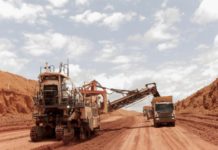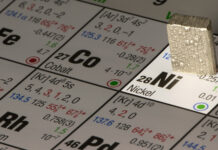[miningmx.com] — Congo’s struggling copper and cobalt sector is slowly rebounding on rising metal prices, but a full-scale recovery will depend on major projects in development, the minister of mineral-rich Katanga province said at the weekend.
Democratic Republic of Congo’s high-risk copper sector, a vast treasure trove of enormous untapped reserves, was crippled by the global economic downturn as prices plunged on a drop in demand last year.
Production fell by half as major mining projects slowed their operations or suspended them entirely, a trend which has begun to be reversed.
“Due to the rise in metal prices, most of the companies that slowed down their activities are now relaunching their production. There is a slight rebound, and we hope that production will increase,” Katanga’s mines minister Juvenal Kitungwa told Reuters.
Prices are again on the rise, trading at over $6,250 per tonne on Monday, double the level at the start of the year.
“But, among those companies that closed, there’s still not a real return. And new companies are not opening,” Kitungwa said.
Last year, production slipped to just 142,000 tonnes, down from 213,000 in 2007, and well below a 1986 peak of 476,000.
The crisis put half of the province’s estimated 300,000 informal miners out of work. The dozens of small companies which bought their ore, spurred by record high prices, shut their doors as thin profit margins evaporated.
Their production had accounted for the bulk of copper and cobalt exports, the country’s primary foreign currency earner. And, as multi-million dollar projects that boomed in the wake of successful 2006 elections push forward, Kitungwa said informal miners have been increasingly sidelined.
“The concessions that they were exploiting were handed back over to the big multi-national companies. Now they don’t have enough sites to work, which has created a shortage of material arriving at treatment facilities,” he said.
INDUSTRIAL COMEBACK
But while production levels are expected to remain low in the short-term, investor interest is booming and financing is flooding back in as part of a trend that promises to boost industrial production in coming years.
Earlier this year, Freeport-McMoRan’s giant Tenke Fungurume mine, widely regarded as the world’s largest and highest grade undeveloped copper and cobalt project, went online.
Katanga Mining announced last month that it had expanded its operations by acquiring the Kamoto mine. The Toronto-listed firm expects to ramp up production to 150,000 tonnes of copper in 2011.
Australia’s Anvil Mining recently finalised a financing deal worth $200 million with Trafigura Beheer B.V., and Eurasian Natural Resources Corp is in negotiations to buy AIM-listed junior Central African Mining and Exploration Co. for $950 million.
“Looking at the general environment in the mining sector, we must consider that the production rebound can only come from the big investors, because the big investors have more efficient extraction and production,” Kitungwa said.
That, he says will help offset one of Congo’s lingering growth limitations: excessively high production costs. The price of extracting a tonne of copper in Congo is around $2,800 to $3,000. In contrast, production costs in South American copper giant Chile are around $1,700 per tonne.
“We’re optimistic. Very, very optimistic. We know that we have the best copper and cobalt mines,” Kitungwa said.
“The rebound will come. Economies work on a principle of cycles, and that after the low cycle things will improve. We’ll come back.”










